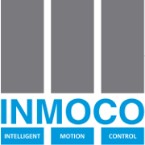Linear Motors
Linear motors are electrical induction motors producing a straight-line motion rather than rotary. This is achieved by 'unrolling' the stator and rotor. The primary rotor is the stator, which is flat coils of copper or aluminium laid in a track while the secondary rotor is in the form of a moving platform. It uses superconducting magnets to provide sufficient power. The lack of moving parts means that linear motors are quieter and easier to repair than other motors while their straight-line motion conserves energy. There are a number of varieties of linear motors. They can be synchronous, induction, homopolar, Piezo electric and dual-axis. Lineal motors can also be characterised as to whether they are high- or low-acceleration. The uses of high acceleration are for rides at amusement parks and spacecraft propulsion whilst low acceleration is used for ground-based transportation systems. Linear motors have a number of applications. In industry, linear motors can be used to power overhead cranes and beltless conveyors for moving sheet metal. It can propel the shuttle in automatic looms. For transport, the Maglev train system has a linear motor and so does the baggage handling system at airports and most automatic sliding doors.
-
Intelligent Motion Control Ltd (INMOCO)
View company profileFor over three decades INMOCO has been at the forefront of Industrial Automation and Motion Control offering a comprehensive range of motion control products covering compact Servo Amplifiers, Position Controllers, Gearheads, Stepper Motors and Controllers, Linear Motors, Sensors, and Electric Actuators. More recent additions to the product range include High Precision Linear and Rotary Encoders.
Today, INMOCO not only provides products with application and after sales support, but can also incorporate those products into customer-specified electromechanical sub-assemblies, which also includes testing and calibration. These latest additions to our services not only enables our customers a "Plug and Run" solution, but also enables them to reduce their supplier base.
Our facilities include system engineering, ex-stock sales distribution, building and testing sub assemblies and a class 10,000 clean room facility.

